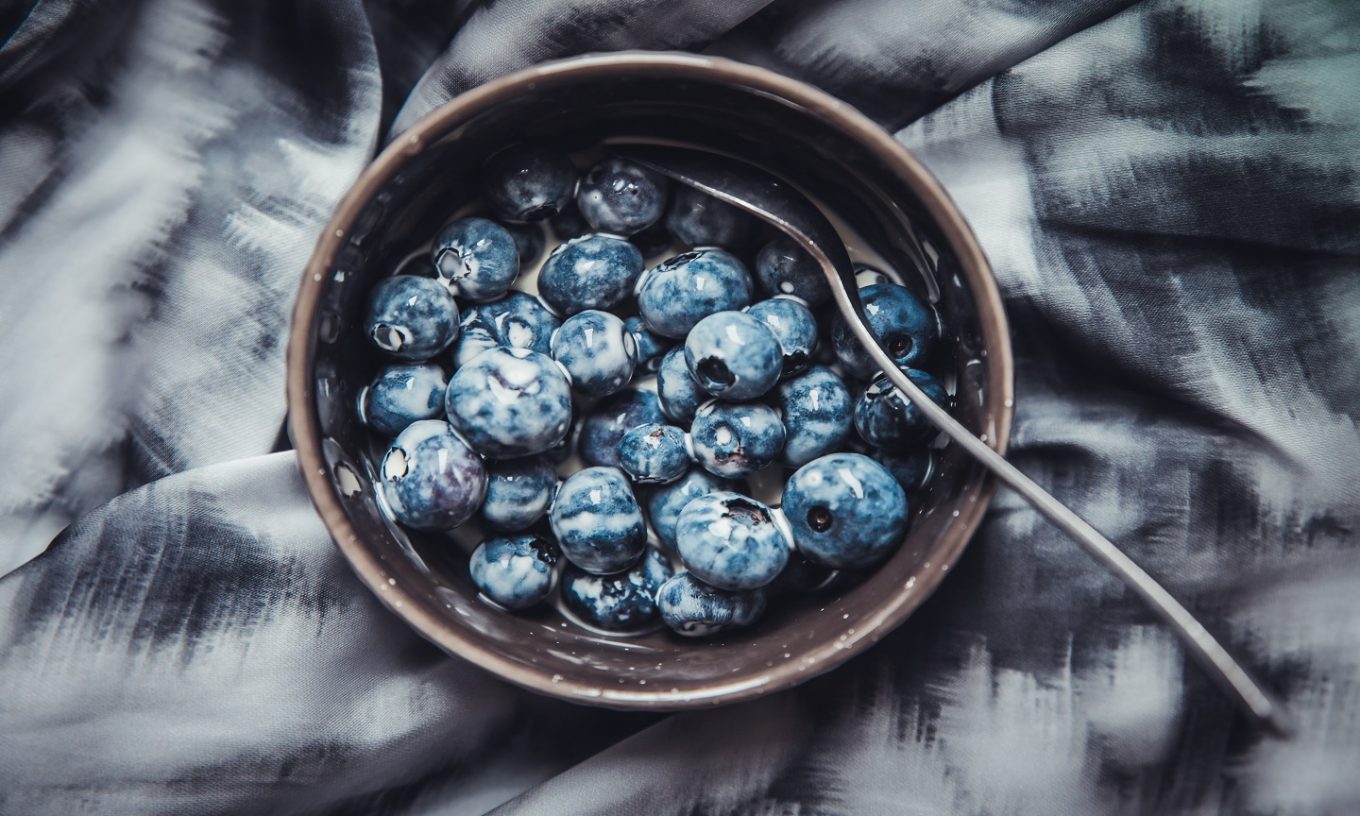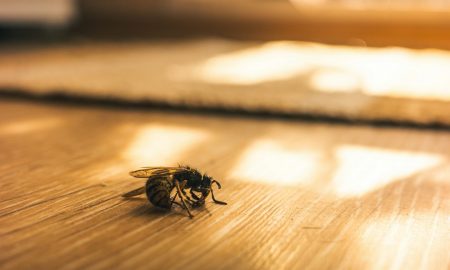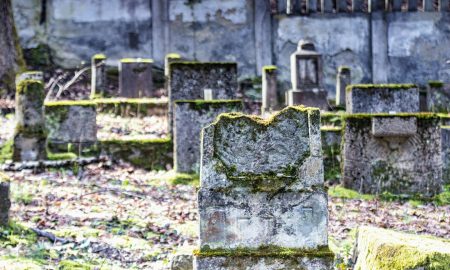The closest bonds we will ever know are bonds of grief.
—Cormac McCarthy
Blueberry tea. Blueberry jam. Blueberry pie. The fragrance and flavor of dried blueberries my Baba’s sisters mailed to her from Ukraine. Khrushchev, Kennedy, the KGB, the Cuban Missile crisis, October 1962. I was six years old. The monsters under my bed were Communists.
Baba Hull, my dad’s mom, made blueberry pyrohy (dumplings). They were shaped like half-moons, and slightly longer than the palm of my hand. No one I knew made blueberry pyrohy except Baba. My mom and my aunties used cottage cheese and potato filling, or sauerkraut.
When Baba was at home she wore dark cotton blouses, buttoned up to her neck, and mid-calf length skirts. Cotton-polyester in warmer months, wool in winter. Her gray hair was scraped back into a bun––secured at the sides with bobby pins.
If we were incredibly lucky, we were at Baba’s when she made those blueberry pyrohy. First, she poured hot water over the dried berries and set them aside to soften them. She kneaded the dough until it formed a glossy ball. When it had rested, she pinched off small bits and rolled them in circles into balls. She filled each circle with the flour-thickened berries and she pinched the edges firmly between her thumb and forefinger. She cooked them in a large pot of simmering water until they floated to the top, then strained them and put them in a large stainless steel frying pan with heavy whipping cream. 40% fat––the indulgence in my morning coffee. The unforgettable mouthfeel—the richness and silkiness of the cream and the perfectly cooked dough and the tart blueberries. My sister Linda and my brothers, David and Gordon and I sat around her yellow Formica table and heard the plop-splot-splot of the cream as bubbles broke the surface. Baba’s blueberry pyrohy was one of the most anticipated treats of our childhood.
I was at her house when I was about ten, in 1966. Gido, my grandfather, carried in a medium-sized cardboard box from the post office. It had strange lettering and stamps on it. Receiving mail from Communist-ruled Ukraine was rare. Baba sliced open the box, opened the inner packing, and lifted out handfuls and handfuls of loose, dried indigo berries. Sweetness has a smell, and this was it, an intense fragrance that wafted from that box. A fragrance like the expensive blueberry jam from England I love. Like the loose black tea flavored with bits of dried blueberries that I steep, add full-fat cream to, and remember my Baba.
I have picked wild, low-bush blueberries with my mother and sisters in the fields outside St. Paul, Alberta, where we lived. In the morning we packed buckets, water and lunch. We wore my father’s old long-sleeved cotton dress shirts and wide-brimmed straw hats. We squatted by the low bushes. We sat on the ground. We reached for the small clusters of ripe blueberries, careful to avoid leaves and leaving the waxy white and green berries to ripen. Once we got home with sore muscles and sun-flushed faces we sifted through the berries, washed them, patted them dry and froze them.
I think Baba’s sisters sent love in the box of blueberries they mailed to her. It is hard work to pick low-bush blueberries. It takes a pound of fresh blueberries (about 4 cups) to make about a cup of the dried. After picking them, they would’ve dried them in the sun outside their thatched white plastered farmhouses near Lviv in northwest Ukraine. I imagine them spreading the berries on large linen kitchen sheets, cloths and rotating them several times a day for even drying. Perhaps enlisting a child to shoo the birds away.
My grandparents and my father, a toddler, fled Ukraine in 1926. I think of Baba packing a strong pine-board trunk with supplies for Canada. Farming tools were most important; you could pack a scythe and a sickle, a hoe, a shovel. Did she have room for the brightly colored braided rug her mother made? The baby dress worn by her daughter, Anya, dead before her second birthday.
She wrapped bread bowls and pans in winter shirts and her husband’s pants and the long winter skirts she wore. As she packed, she said goodbye—not to the people she loved, but to her village, to the white-washed, thatched-roof houses, to the scent of peach trees, to the lane that led to her mother’s house, to the Ukrainian Catholic Church, to the graveyard of her Anya. To the homeland she had no desire to leave. To her life.
No one told her how harsh the land was they were going to settle, and how hard it would be to clear trees and brush, grow crops and buy food. Baba never talked about it. None of the adults of her generation talked about it. Myrna Kostash, the Canadian author of All Baba’s Children, writes that none of the immigrants wanted to talk about the hard times, so I don’t know.
Baba was a sturdy, dour woman with a broad Slavic face, her hair coiled tightly in a bun at the back of her head. She has been dead for 44 years. I remember she rarely smiled and went through her days with determination and a workmanlike attitude. Her house was always clean, her yard and garden pristine, laundry or dishes never in sight. In the photos I have of her she faces the camera squarely, two frown lines between her eyes and the beginning of loose skin under her chin. She looks strong standing next to my grandfather and dominates the space. Her feet are planted apart, her back is straight, shoulders broad. In photos where she is holding me or any of my six brothers and sisters, she looks the same. Unsmiling. Strong.
Do I look like her? I pull my shoulder-length gray hair severely back from my face as she did. I’m not wearing makeup today, and I don’t smile. Her eyes look back at me in the bathroom mirror. Her eyebrows. The implacable set of her mouth.
Because Baba didn’t show much emotion, it was hard to know her. I know she worked hard. She meticulously tilled a vegetable garden next to their house in town and what seemed like an acre garden two miles out of town on the farm. Her lawn was lush. She regularly trimmed the dense cotoneaster hedges surrounding their corner lot. She swept the concrete sidewalk leading from the house to the garage. In winter, she made heavy quilts––thick batting of carded wool covered in cotton poplin.
Everything in her home was fine quality. A burgundy sofa and chair, steel gray wool wall-to-wall carpet in the living room, and the 50s style Formica kitchen table with metal legs and yellow vinyl upholstered chairs. There were no books, no magazines and nothing decorative on the table.
In person, she was stern, often exasperated by us. She threatened us, “I’m going to give it to you right now!” I say the Ukrainian words now, “Ya tubee zahrus dahm!” I savor the language and once more feel the force of her personality.
After her funeral, in 1978, my six siblings and I, in our teens and early twenties, clustered together and retold Baba stories. Baba once flung a teapot of scalding tea across the kitchen at Gido. Baba bashed in the ornate plaster ceiling in the living room with a crowbar. Baba slapped blue house paint across both doors of Gido’s 1955 GMC work truck, ruining the signs for his business, “People’s Department Store.” We laughed because we were young. We laughed because we were confused. We laughed because we didn’t know her story, or how her story would impact us.
Anger sustained her, and she was bitter. I think of her life now as a corroded chain of loss. In Elizabeth Kubler Ross’ five stages of grief (denial, anger bargaining, depression and acceptance) Baba was stuck in anger. I am sixty-six years old and I have also suffered loss and trauma. It’s acceptable for me to talk about loss. It was not acceptable in Baba’s generation. Or my parents. Now that I have raised a child, now that I have buried my mother and my father and my grandmothers and my grandfathers and left Canada for a country––the United States––that is hostile to immigrants; I want to understand her life and her choices. I know her life shaped her, my father’s and mine.
I wish I could talk to her today. She died in 1978; she was 78 years old. I was only 22, and years away from getting help to resolve my own trauma and decades away from seeing how our experiences were linked.
I used to think I didn’t love her. I didn’t not love her—she was just different from my pretty, sophisticated mother, and her mother. Baba Krochmal spoke fluent English, was mostly Anglicized and was a gracious hostess. Baba Hull, on the other hand, was no different than the other half-dozen babas who sat across the aisle (Old Testament style) from the men on the left side of the St. Paul Pentecostal Church. They looked like the women Myna Kostash describes, “steel-eyed and angry. Cold as snakes… their husbands oppress them all week.”
Baba and Gido died six months apart in 1979. My father, their only surviving child, inherited the land. We grandchildren each chose or were given something from the house. David got the low dark oak dresser with the attached, framed, tilting mirror. I wanted it. Linda got a pink depression glass water pitcher and a cedar chest. I wanted them. Pat got the distinctive square Johnson Brother’s English dishes with the rounded corners. I wanted those. I took the golden oak hutch that was stored in an old farm building and had it refinished. I resented my brothers and sisters for getting Baba’s things. And I felt awful about it. I realized recently that it wasn’t the things I wanted. I wanted the threads to Baba. I wanted what the furniture and dishes represented.
I see through the glass of my heritage darkly. I see outlines of what ties me to Baba. Ties that stretch across countries, across oceans, across generations. I cultivate my otherness, my identity as an immigrant woman. I am very aware that I am a well-educated, much-loved wife, living in comfort—but I, too, am an immigrant. I cultivate my sense of alienation. See, Baba? I am just like you.
Baba kept close ties to her family in Ukraine. She sent packages to them—fine wool babushkas (kerchiefs) and sometimes money. They sent back dried wild blueberries. My father regularly lined up all seven of us to take pictures “for the old country. Baba’s family was my family, and I knew their hardships. As a child, I absorbed her fear of the then Soviet Union, read terror in the words: Iron Curtain, KGB, Siberia. After Stalin, there was Malenkov and then Khrushchev pounding the table at the UN and in 1961 pointing nukes at the United States and facing off against John F. Kennedy.
I emigrated to the United States in May 2000, when I was 44. Even though my skin is white, and I was going to marry an American, crossing the border at the Port of Entry at Sweetgrass, Montana, was frightening.
My second husband, Scott Gray, is kind, calm, non-judgmental. He loves me, and he loves Amanda. After I was married about six months, I was denied entrance one blustery winter day because of a computer error. I insisted on speaking to the commander. I snot-faced cried. I stayed overnight on the Canadian side of the border in a quaint, old motel. I wondered how long I would have to stay in Canada, and when I could rejoin Scott. The border officials allowed me entrance on a refugee visa. I keep this document in our lock box, along with my immigration card and my marriage license––documents I must produce to stay in the United States.
After my marriage on May 12, 2000, I waited eighteen months to be issued a landed immigrant card and eligibility for employment. Eighteen months of futile phone calls and long drives and longer waits in the immigration office before I was photographed by a frowsy, white-haired bureaucrat and issued my card.
I felt terror when former President Trump publicly admired Vladimir Putin; I felt terror on February 24, 2022, when Russia invaded Ukraine. I felt the terror of the generations of my family that had suffered under Communist rule. I was afraid. I am still afraid. Terror is baked in my genes.
In 1966 Canadian psychiatrist, Dr. Vivian Rakoff, MD, published her observations about the distress suffered by the children of Holocaust survivors. More recently, another Canadian, psychologist Brent Bezo, studied similar reactions, but in three generations of Ukrainians during his time in Ukraine. Now there is credible research and clinical practice that mass trauma affects future generations. Wars, famines, atrocities, more wars.
Mryna Kostash recorded the stories of the children of Ukrainian immigrants who settled in Alberta, in her 1977 book, All Baba’s Children. As first-generation Ukrainian Canadians refused to talk about the early years, Kostash talked to their children––people of my father’s generation. Vegreville, Two Hills, Foisy and in Duverney––small Ukrainian towns I knew well. She gathered stories and studied newspapers and government documents. This is all I know about Baba’s early years in Canada.
My only child, Amanda, lives in Lethbridge, Alberta, and loves the history of our Ukrainian family––on my mother’s and father’s sides. We recently connected on WhatsApp for a couple of hours. I tidied the chaos on my desk, half-listening as she exclaimed over the data available online at Archive.org. She explored the 1926 Canada census, then the records of land titles, then passenger lists of ships. She discovered the land title filed by her maternal great-great-grandfather, Pawlo Stryczun, in 1904. She feels a connection to the generations of my family, too.
We log off. I head into the kitchen and turn on the electric kettle. I lift the lid off a pastel blue tin of Adagio blueberry tea––black tea with dried blueberry leaves and whole dried blueberries. There it is––that sweet smell. New York scent expert Dawn Goldworm says, “Smell and emotion are stored as one memory. When you smell something, the emotional cortex of your brain is stimulated, creating “scent emoticons” that never leave your brain.” I am once again a ten-year-old girl in my Baba’s kitchen, feeling my connection to her, to my childhood, to my Ukrainian people.
Photo by Mona Eendra on Unsplash





